2.5: Properties of Multiplication
- Page ID
- 48840
Properties of Multiplication
- understand and appreciate the commutative and associative properties of multiplication
- understand why 1 is the multiplicative identity
The Commutative Property of Multiplication
Commutative Property of Multiplication
The product of two whole numbers is the same regardless of the order of the factors.
Sample Set A
Multiply the two whole numbers.
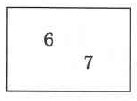
Solution
\(6 \cdot 7 = 42\)
\(7 \cdot 6 = 42\)
The numbers 6 and 7 can be multiplied in any order. Regardless of the order they are multiplied, the product is 42.
Practice Set A
Use the commutative property of multiplication to find the products in two ways.

- Answer
-
\(15 \cdot 6 = 90\) and \(6 \cdot 15 = 90\)
Practice Set A

- Answer
-
\(432 \cdot 428 = 184,896\) and \(428 \cdot 432 = 184,896\)
The Associative Property of Multiplication
Associative Property of Multiplication
If three whole numbers are multiplied, the product will be the same if the first two are multiplied first and then that product is multiplied by the third, or if the second two are multiplied first and that product is multiplied by the first. Note that the order of the factors is maintained.
It is a common mathematical practice to use parentheses to show which pair of numbers is to be combined first.
Sample Set B
Multiply the whole numbers.
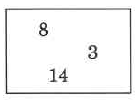
Solution
\((8 \cdot 3) \cdot 14 = 24 \cdot 14 = 336\)
\(8 \cdot (3 \cdot 14) = 8 \cdot 42 = 336\)
Practice Set B
Use the associative property of multiplication to find the products in two ways.

- Answer
-
168
Practice Set B

- Answer
-
165,564
The Multiplicative Identity
Definition: The Multiplication Identity is 1
The whole number 1 is called the multiplicative identity, since any whole number multiplied by 1 is not changed.
Sample Set C
Multiply the whole numbers.

Solution
\(12 \cdot 1 = 12\)
\(1 \cdot 12 = 12\)
Practice Set C
Multiply the whole numbers.

- Answer
-
843
Exercises
For the following problems, multiply the numbers.
Exercise \(\PageIndex{1}\)
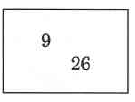
- Answer
-
234
Exercise \(\PageIndex{2}\)

Exercise \(\PageIndex{3}\)
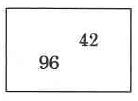
- Answer
-
4,032
Exercise \(\PageIndex{4}\)

Exercise \(\PageIndex{5}\)
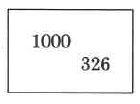
- Answer
-
326,000
Exercise \(\PageIndex{6}\)
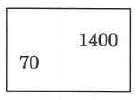
Exercise \(\PageIndex{7}\)
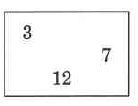
- Answer
-
252
Exercise \(\PageIndex{8}\)

Exercise \(\PageIndex{9}\)

- Answer
-
21,340
Exercise \(\PageIndex{10}\)

Exercise \(\PageIndex{11}\)

- Answer
-
8,316
Exercise \(\PageIndex{12}\)
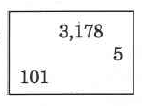
For the following 4 problems, show that the quantities yield the same products by performing the multiplications.
Exercise \(\PageIndex{13}\)
\((4 \cdot 8) \cdot 2\) and \(4 \cdot (8 \cdot 2)\)
- Answer
-
\(32 \cdot 2 = 64 = 4 \cdot 16\)
Exercise \(\PageIndex{14}\)
\((100 \cdot 62) \cdot 4\) and \(100 \cdot (62 \cdot 4)\)
Exercise \(\PageIndex{15}\)
\(23 \cdot (11 \cdot 106)\) and \((23 \cdot 11) \cdot 106\)
- Answer
-
\(23 \cdot 1,166 = 26,818 = 253 \cdot 106\)
Exercise \(\PageIndex{16}\)
\(1 \cdot (5 \cdot 2)\) and \((1 \cdot 5) \cdot 2\)
Exercise \(\PageIndex{17}\)
The fact that
\((\text{a first number } \cdot \text{ a second number}) \cdot \text{a third number} = \text{a first number} \cdot (\text{a second number } \cdot \text{ a third number})\)
an example of the property of multiplication.
- Answer
-
associative
Exercise \(\PageIndex{18}\)
The fact that \(1 \cdot \text{ any number} = \text{that particular number}\) is an example of the property of multiplication.
Exercise \(\PageIndex{19}\)
Use the numbers 7 and 9 to illustrate the commutative property of multiplication.
- Answer
-
\(7 \cdot 9 = 63 = 9 \cdot 7\)
Exercise \(\PageIndex{20}\)
Use the numbers 6, 4, and 7 to illustrate the associative property of multiplication.
Exercises for Review
Exercise \(\PageIndex{21}\)
In the number 84,526,098,441, how many millions are there?
- Answer
-
6
Exercise \(\PageIndex{22}\)
Replace the letter m with the whole number that makes the addition true.
\[\begin{array} {r} {85} \\ {\underline{+\ \ \ m}} \\ {97} \end{array}\nonumber\]
Exercise \(\PageIndex{23}\)
Use the numbers 4 and 15 to illustrate the commutative property of addition.
- Answer
-
\(4 + 15 = 19\)
\(15 + 4 = 19\)
Exercise \(\PageIndex{24}\)
Find the product. \(8,000,000 \times 1,000\)
Exercise \(\PageIndex{25}\)
Specify which of the digits 2, 3, 4, 5, 6, 8,10 are divisors of the number 2.
- Answer
-
2, 3, 4, 6


